Geometry With Robots!
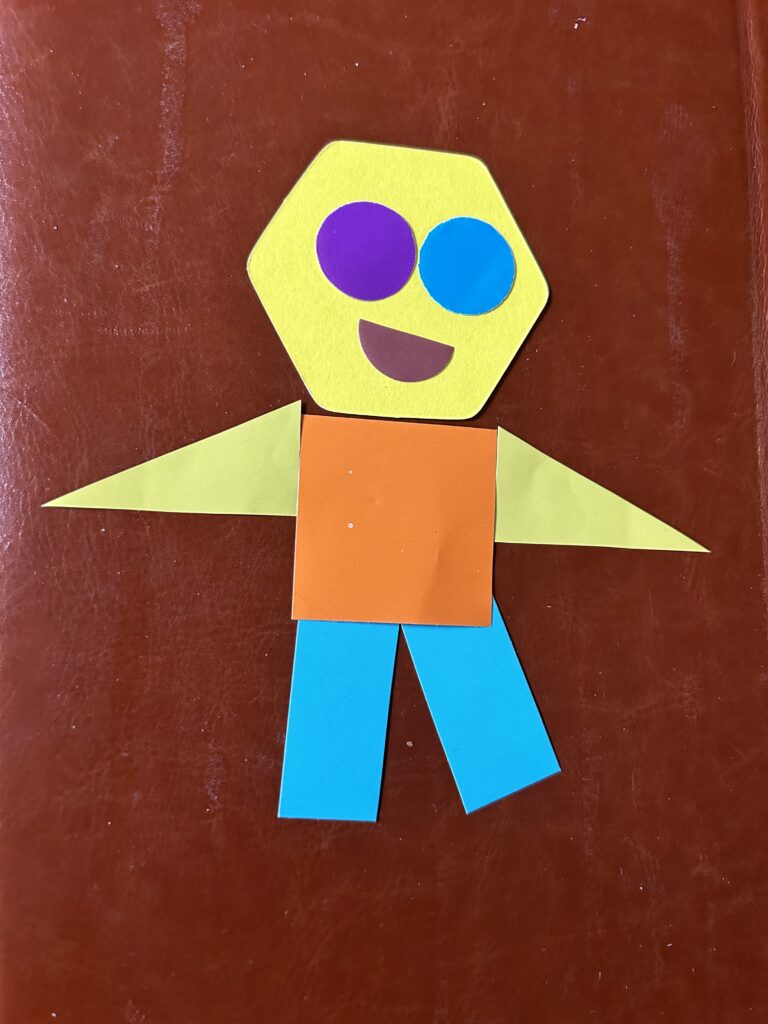
“I-am-a-robot! I-can-do-anything!” squeaks Terrell in his best four-year-old robot voice.
“Oh, I like that you used that octagon for your robot’s head,” says Michaela. “I am going to try that!”
We are deep into robot construction this month and robots are popping up all over our play spaces. We are constructing robots from clay. We have block robots. We have MagnaTile robots and button robots. What a great opportunity to work on shapes and spatial reasoning!
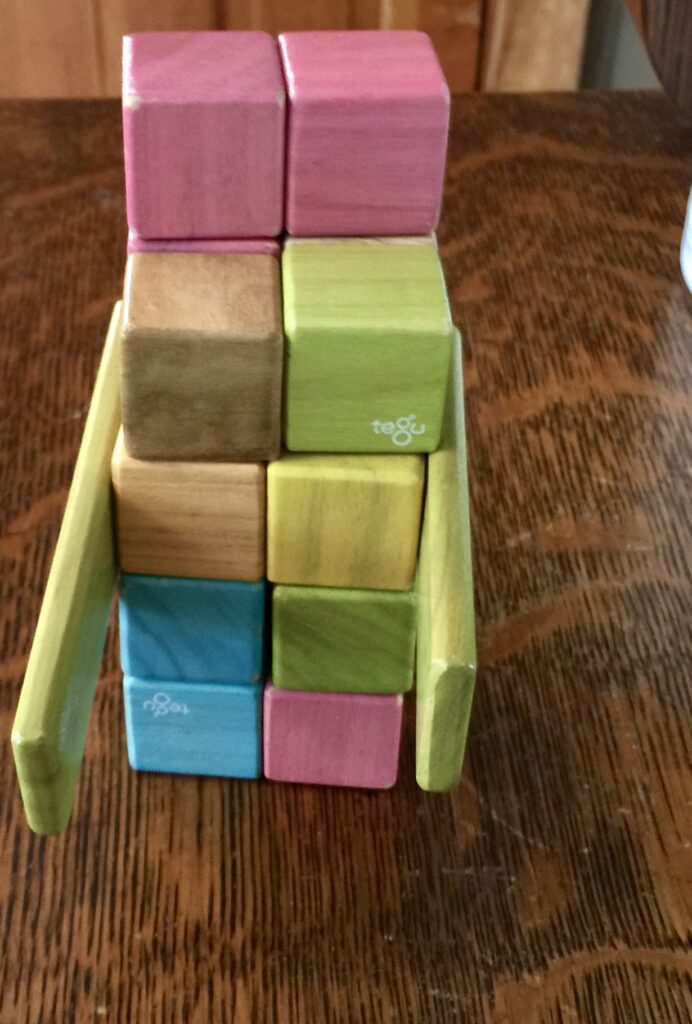
When children play with shapes, they are building rudimentary skills that lay the foundation for later math learning, as well as reading and writing. Shape recognition and identification can help children understand signs and symbols. Children begin to notice shapes before they have the language to name those shapes. In the toddler and preschool years, children learn to name their first shapes: circles, squares, triangles and rectangles.
Shapes are the foundation of geometry. Children need hands-on investigation to understand more than just naming or classifying shapes. Our robot play acquaints children with simple shapes—as well as more advanced concepts such as symmetry, angles and fractions—as they engage in activities such as measuring, counting or investigating 2D and 3D shapes.
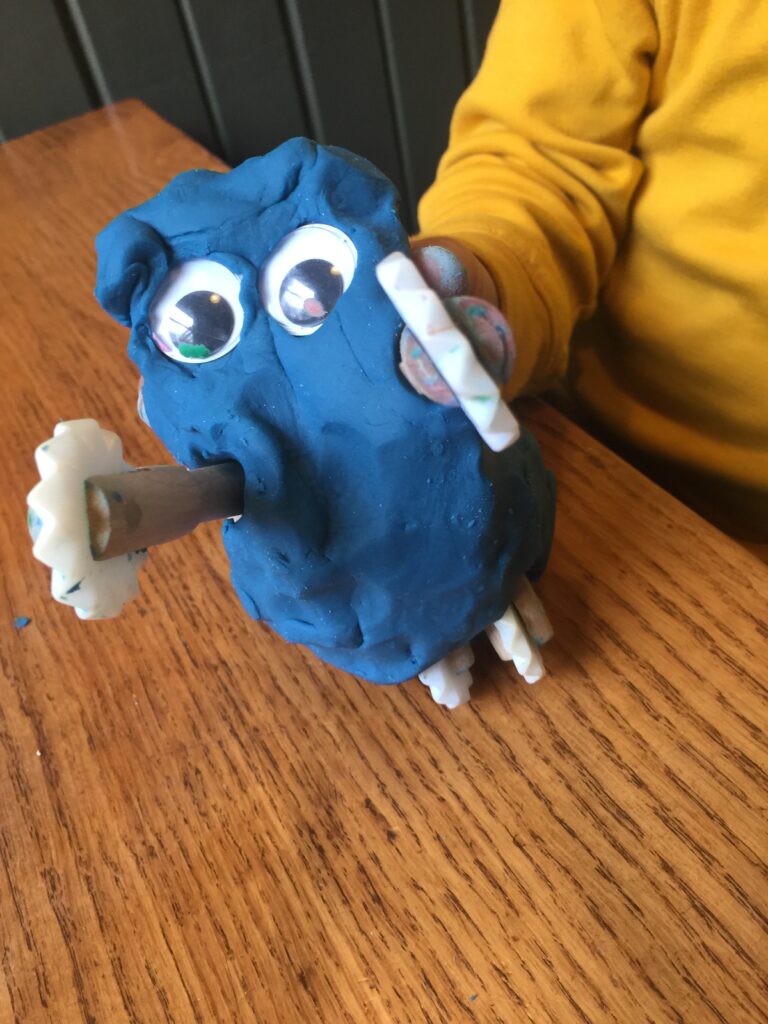
Geometry involves shape, size, position, direction and movement. In early education, geometric skills include identifying and comparing shapes, differentiating between shapes and creating shapes.
During our robot-building bonanza, the children are combining shapes in their constructive play. I watch as they learn that they can combine two squares to make a rectangle. They begin to see what happens when they turn a shape upside down. It is still the same shape even if it looks different.
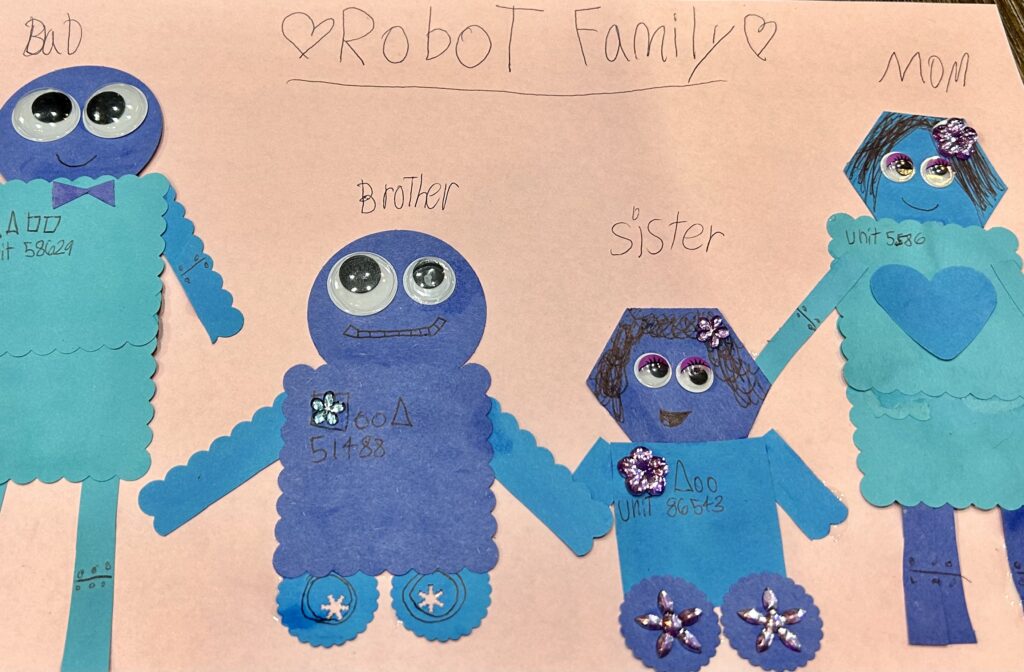
Research suggests that preschoolers’ early mathematics learning—including spatial-thinking skills—is related to later success in both reading and math. When children hear us use spatial terms to describe the size, shape and location of objects—and then adopt those words themselves—they perform better in activities requiring spatial skills.
Playing with blocks and puzzles and using spatial words such as above, below, across, on top of, inside and outside enables children to talk about where things are located. This strengthens their understanding of these concepts as they use the vocabulary words repeatedly throughout their play.
Geometric shapes are a kindergarten common core standard, and when children actually play with shapes, the learning becomes deeper, more intentional and more relevant. When children manipulate 3D shapes during hands-on play, they build a deeper understanding of these shapes.
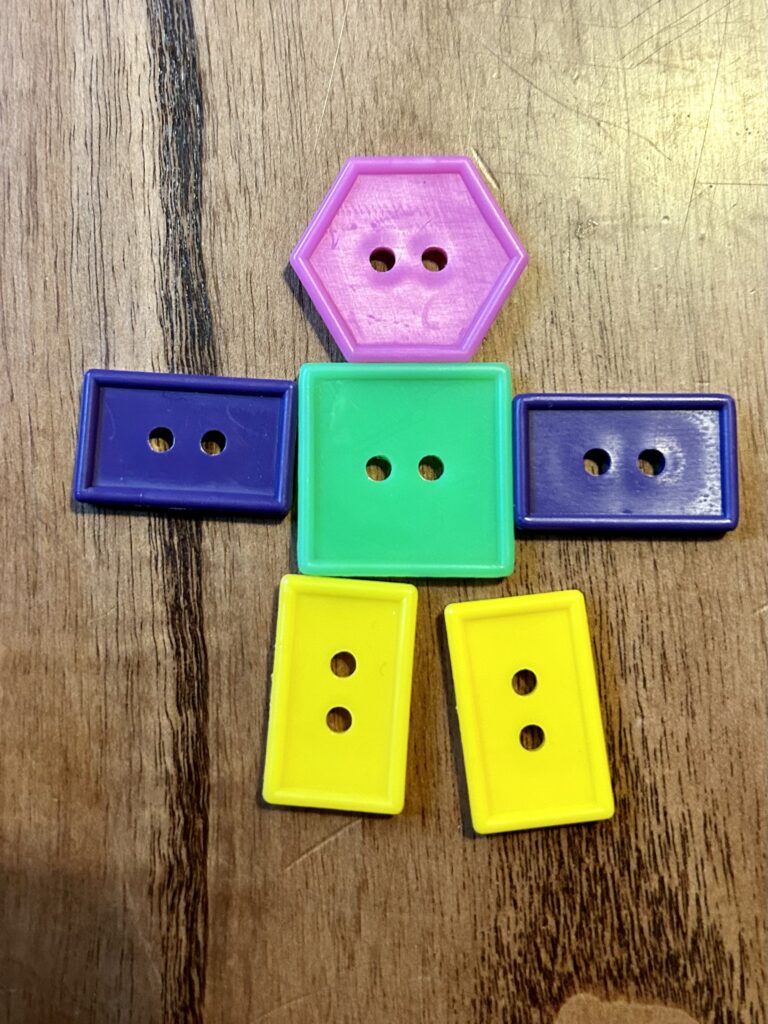
Research has also shown that young children’s spatial skills—rather than their numerical abilities—predict their overall mathematics achievement. The key skill is visualizing what the shapes will look like when they are combined or rotated (Young et al., 2018). A focus on shapes and spaces may provide a more accessible route to math for some children, rather than focusing on numbers alone.
Spatial reasoning develops when children learn how to recognize relationships between 2D shapes and 3D shapes. How is a circle like a ball? How is a square like a box? As children discover that they can rotate, flip and rearrange shapes in different ways to change their possible shape and direction, they become increasingly aware of 2D shapes.
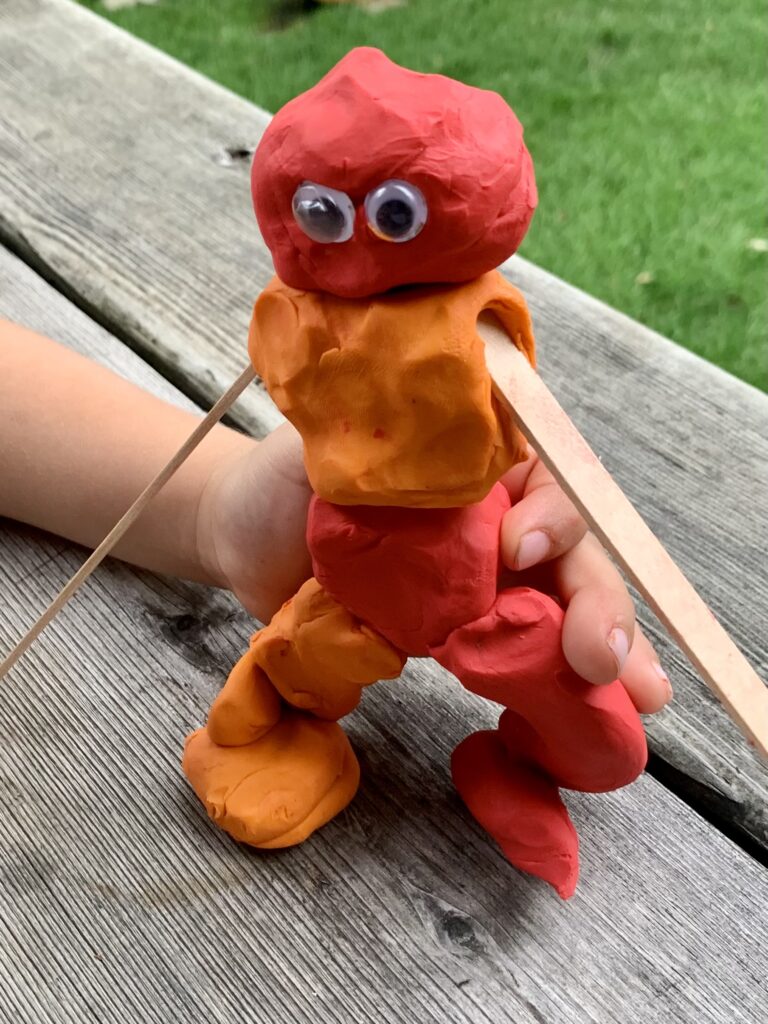
There is a lot of math built into our robot play. Follow the lead of your students, connect the curriculum to the play and you’ll meet your learning standards every day!
Looking for more ways to play with shapes? Extend the learning with these Early Math Counts shape lesson plans!
loved the ideas can make lots of different things using shapes
I like this because it shows how a Child can use different shapes to make a lot of things like a robot.
So many awesome ideas to try i love this!
So many great ideas! The use of different mediums takes the activity to a new level. Children are all hands-on, the use of the clay or playdough along with different shaped items would enlist their senses like crazy! Great lessons.
I like that this has different variations of the robots using different materials and of course shapes! Excellent work!
I like the use of so many different material to make the robots. It really helps the children think outside the box, and start seeing shapes in everyday items.
I love this idea!
I never realized how many materials you could use to practice geometry! I will definitely save this!
These are all great I like the use of so many different materials to create robots. I love to watch the children create and use the shapes to make new or bogger shapes.